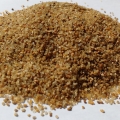14 Jewish Wedding Traditions and What They Mean
There are plenty Jewish wedding traditions to understand whenever planning your wedding day. Listed here is a summary of probably the most ones that are common help you to get started.
Whether you grew up immersed into the Jewish faith and tradition or barely attended temple, you might desire to include Jewish wedding traditions into the wedding day. According to your subculture (Ashkenazi or Sephardic), your standard of orthodoxy, and whether or otherwise not you will be marrying A jew that is fellow traditions might be optional or mandatory. You’ll desire to be certain to completely describe your ceremony with an ordained rabbi or other officiant to choose the plan that is best for you, your personal future partner as well as your family—and discuss any reception traditions along with your loved ones too.
They are a few of the most common Jewish wedding traditions that you might use in your personal time.
In the Shabbat ahead of the wedding, a Jewish few may partake in a aufruf, which means that “calling up” in Yiddish. Only at that ceremony, either the groom or even the few together are called around recite an aliyah, or blessing that is special prior to and after the reading associated with Torah. The rabbi will then bless the few and their impending union. Visitors may throw candy towards the groom or few to commemorate, and there might be a tiny reception after.
With regards to the community that is jewish that they belong, some Jewish partners fast at the time of the wedding. Like the significant vacation Yom Kippur, this is accomplished to atone for almost any sins. The couple might consume once again following the wedding party.
Head Coverings
At a Jewish marriage ceremony, male visitors, Jewish or otherwise not, protect their minds with a skullcap, referred to as a kippah or yarmulke as an indication of respect. Married women traditionally cover their locks too, usually with a lace mind addressing guaranteed having a bobby pin, though in a few communities, females wear kippot too. The couple supplies the mind coverings during the ceremony, therefore visitors don’t need to bring their very own.
Separate Seating
At Orthodox weddings that are jewish women and men might be expected to stay individually throughout the ceremony—and often the reception too. You may visit a mechitza, or partition, arranged to divide the women and men. At some Jewish receptions there could be dancing that is separate well, with either two party floors, or even a mechitza dividing a solitary party flooring into men and women’s edges.
Much more Orthodox communities, a bedeken ceremony occurs prior to the wedding. Ahead of the bedeken, the groom and bride are divided. The groom and their male buddies and family relations make a joyful processional to your bride, who sits for a throne surrounded by feminine family. As visitors sing and dance, the groom puts a veil within the face that is bride’s. This tradition represents modesty, and sources a few biblical stories.
A typical Jewish wedding tradition is the signing of this ketubah, or wedding agreement. A ketubah signing ceremony is typically held soon prior to the wedding ceremony that is actual. The couple chooses two witnesses (not bloodstream loved ones) to signal the ketubah using them, and a rabbi or officiant and close household members will also be current because of this crucial minute. The finalized ketubah is generally shown during a wedding ceremony that is jewish.
The chuppah has transformed into the essential wedding that is jewish. This wedding canopy comes with a fabric supported by four poles, which could either stand by themselves or be held by marriage party people or honored visitors. The chuppah may elaborately be simple or embellished, with respect to the desires associated with the few and their loved ones. The chuppah represents the development of A jewish house and a show of hospitality in to the assembled guests. Within a Jewish marriage ceremony, the officiant and moms and dads associated with the few stand aided by the soon-to-be married couple beneath the chuppah. The man that is best and maid of honor could also stand beneath the chuppah, if desired.
The Processional
In Jewish wedding tradition, the processional is a little different than one you’ll see at a Christian ceremony. Following the rabbi, the bride’s grand-parents while the groom’s grandparents are escorted down the aisle, followed closely by the groomsmen and man that is best. The groom will be escorted by their moms and dads along the aisle, accompanied by the bridesmaids and maid of honor. The bride will be escorted by both of her moms and dads down the aisle.
Referred to as hakafot, the tradition for the bride circling the groom is typical at numerous Jewish weddings—though some partners have updated this customized to mirror contemporary relationships. Through the processional and ahead of the chuppah is reached by the bride, she walks in a group all over groom three or seven times. There are lots of known reasons for this, however it’s most frequently viewed as the bride creating a “wall of security” across the groom. Some partners go with a twist with this tradition by circling one another to show equality inside their relationship. Then they circle each other once if this is the case, the bride circles the groom three times, the groom circles the bride three times, and.
Sheva Brachot
The sheva brachot are seven blessings which can be recited by the rabbi through the wedding service. They’ve been recited more than a cup wine throughout the part that is latter of procedures, and generally are usually recited in Hebrew though they could be translated into English aswell.
Prayer Shawl
A tallit, or fringed prayer shawl, can be utilized in a number of methods included in Jewish wedding traditions. A bride might give her groom a tallit as a marriage present. A tallit may serve as the also fabric part of the chuppah. And through the last blessings, the couple’s moms and dads may put the tallit round the couple’s shoulders as being an icon of unity being enclosed by love.
Breaking of the Glass
The groom breaks a glass (usually wrapped in a cloth napkin or bag to avoid injury! ) with his right foot during the final moments of a wedding ceremony. The few will likely then frequently kiss, and visitors shout “Mazel Tov! ” meaning “Congratulations! ” There are numerous conflicting reasoned explanations why this Jewish wedding tradition happens, however it’s many commonly idea of being a guide into the destruction for the Temple in Jerusalem.
Yichud relates to seclusion, which occurs soon after the marriage ceremony. Based on wedding that is jewish, the newlyweds are secluded from their visitors for a period following the ceremony. This was where the marriage was consummated, but nowadays, the couple will simply enjoy some quiet time (and food! ) before greeting their loved ones at the reception at one time.
Special Reception Dances
You’re probably familiar with the hora—one of the highlights of Jewish wedding traditions if you’ve ever attended a Jewish wedding. This joyful party often takes spot either immediately after the newlyweds go into the reception space or following the dance that is first. As conventional Jewish music performs, visitors dance in groups together with few is seated on seats meetmindful and hoisted in to the atmosphere, where they could hold either part of a handkerchief or fabric napkin.
Another wedding that is jewish you could see within a reception may be the mezinke tanz. This party takes place when the child that is last of household is married. The moms and dads regarding the youngster lay on chairs while the mom wears a flowery top. Visitors dance round the parents and congratulate them in the occasion that is special. This might be done for the moms and dads for the bride, groom, or both, dependent on if they are the past into the grouped family members become hitched.



